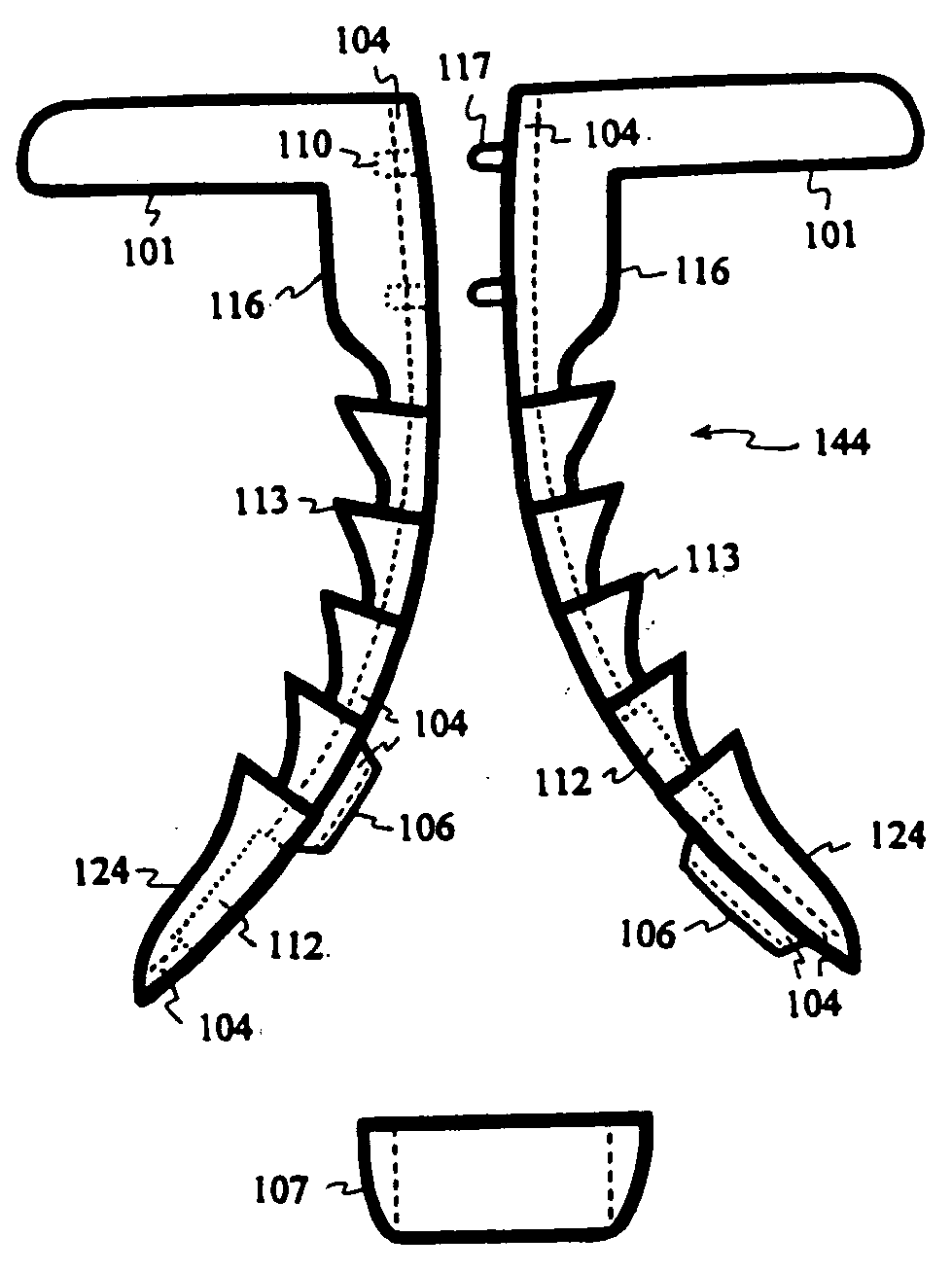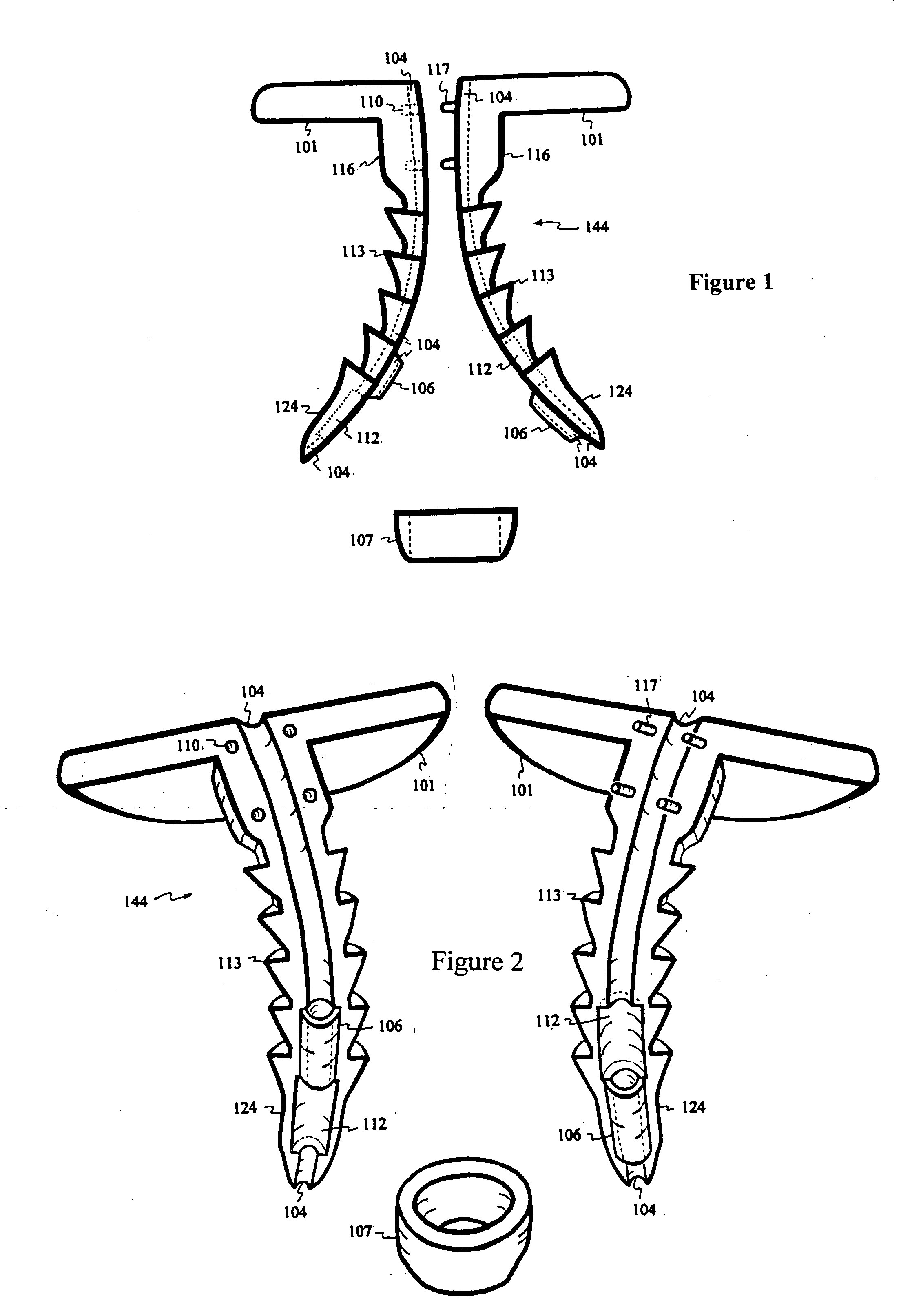Expandable fastener with compressive grips
a technology of expandable fasteners and compressive grips, which is applied in the direction of surgical staples, ligaments, prostheses, etc., can solve the problems of non-degradable devices migrating into undesirable places, surgical repair of tears can be invasive, and painful scar tissue adhesions
- Summary
- Abstract
- Description
- Claims
- Application Information
AI Technical Summary
Benefits of technology
Problems solved by technology
Method used
Image
Examples
Embodiment Construction
[0104] Although molding, casting or machining the expandable fastener as a single piece is possible, the expandable fasteners are assembled from individual parts to clarify the mechanisms and functions. In addition, the parts can be made with different materials to enhance performances of the expandable fasteners. FIG. 1 depicts a side view of the three components of the expandable tack fastener 144. Two curved pieces or sections are made with elastic material containing generally semi-circular heads 101, necks 116 and legs 124 with outward facing gripping elements 113 and longitudinal troughs 104 or grooves in the interior sides. FIG. 1 also shows pegs 117 protruding from the interior side of the right piece at the head 101 and neck 116 regions. In the interior side of the left piece, peg holes 110 are positioned, sized, and configured to fit the pegs 117. On both interior sides of the right and left legs 124, semi-cylindrical trocar retainers 106 or passages arch over the troughs ...
PUM
 Login to View More
Login to View More Abstract
Description
Claims
Application Information
 Login to View More
Login to View More - R&D
- Intellectual Property
- Life Sciences
- Materials
- Tech Scout
- Unparalleled Data Quality
- Higher Quality Content
- 60% Fewer Hallucinations
Browse by: Latest US Patents, China's latest patents, Technical Efficacy Thesaurus, Application Domain, Technology Topic, Popular Technical Reports.
© 2025 PatSnap. All rights reserved.Legal|Privacy policy|Modern Slavery Act Transparency Statement|Sitemap|About US| Contact US: help@patsnap.com



